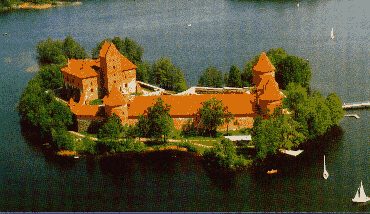| Group | Baltic (with Old Prussian, Sudovian etc.), East Baltic (with Latvian, Semigalian and Selonian) |
| Geography | Lithuania, parts of north-eastern Poland |
| History | The Old Lithuanian language is known from the sources since the 15th century. At that time the official languages of Lithuania were Latin and Polish. Still, materials for learning the language can be retrieved from Russian and Polish manuscripts, and place names in Lithuania. Lithuanian (or Upper Lithuanian, Aukstaitian) was one of numerous dialects of this region spoken in central and eastern parts of the country. After Great Prince Mindaugas and his descendants in the 13-14th centuries unified lands of Lithuanians, Curonians, Semigalians, the united form of the language started shaping. Today the language is officially spoken in Lithuania, and also by minorities in Poland. |
| Phonetics | The most complicated feature of Lithuanian phonetics is its stress: the system of three tones which are still important for pronunciation. Acute, circumflex and gravis intonations act for long and short vowels of Lithuanian, and moreover the stress is absolutely free in the word. There is a number of diphthongs which share the peculiarities of the stress. The system of consonants demonstrates variety of affricates. |
| Nominal Morphology | The noun seems quite archaic in Lithuanian, showing seven cases, two or even three genders (neuter is preserved for pronouns and adjectives), two numbers. Dialects use even more case forms, probably inherited from Finnish: ablative, adessive and others. Adjectives can be pronominal - their declension is extremely hard to memorize. |
| Verbal Morphology | The verb has three main kinds of formation; it is conjugated in number (the dual number is preserved as well), in person. The third person in Lithuanian, as well as in all other Baltic languages, does not vary in number (he goes = they go, Lith. eina). The wide range of participles and verbal adverbs is also in use. |
| Lexicon | A great lot of common features in phonetics, morphology and lexicon generated the theory of the common Balto-Slavic language which could exist in East Europe before it split into separate dialects. Lithuanian also has a number of definite cognates in Thracian and other ancient Balkan languages, mostly in lexicon. |
| Writing | Latin alphabet |
| Close Contacts | Slavic is obviously the closest relative of the Baltic tongues. Among other families, Finnish languages definitely influenced morphology and lexicon of Lithuanian. Today's dialects of the language show a lot of elements of relative tongues which ceased to exist: Curonian, Old Prussian, Semigalian. |
| Sample | Ne veltui sakoma, kad geriau viena karta pamatyti, negu šimta
kartu girde.ti. Tai labai teisingai galima sakyti apie Lietuva ir jos miestus
bei gamta.
People are quite right to say that it is better to see once than to hear a hundred ones. This is especially correct when we speak about Lithuania and its cities and nature. |
| Picture |  |
| More info |